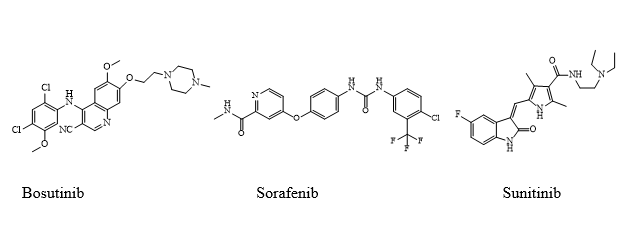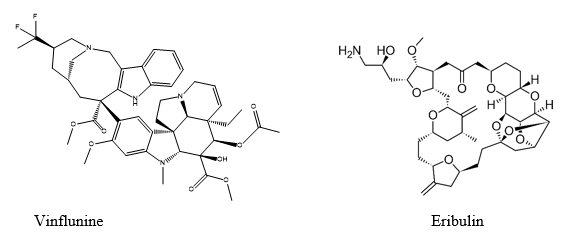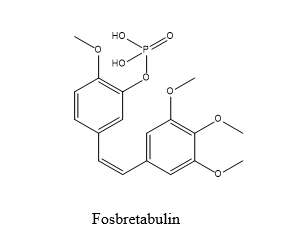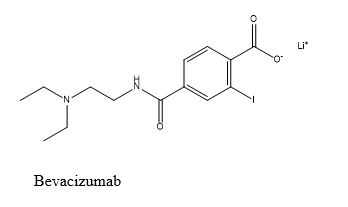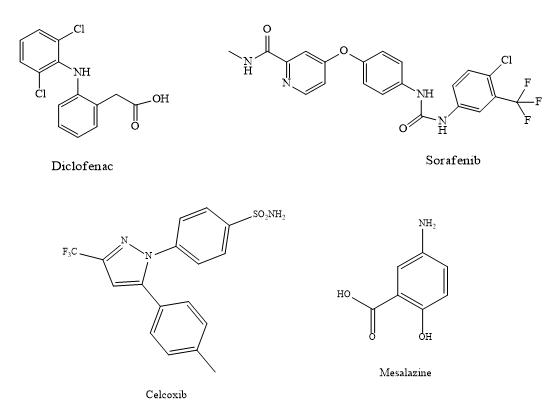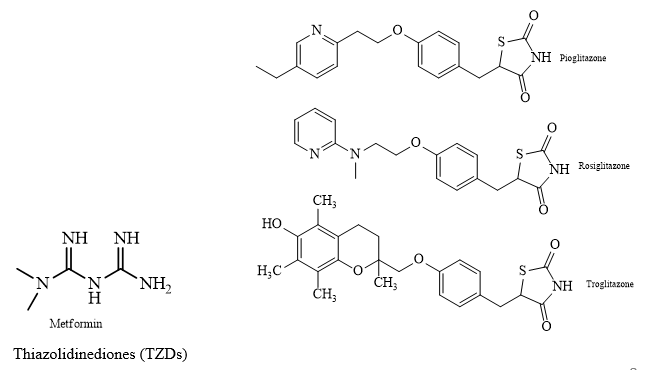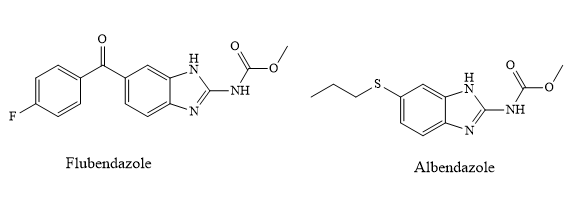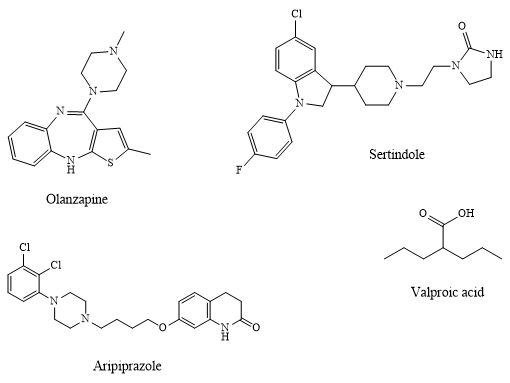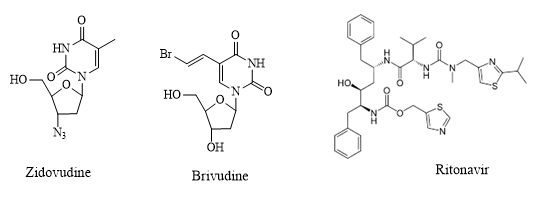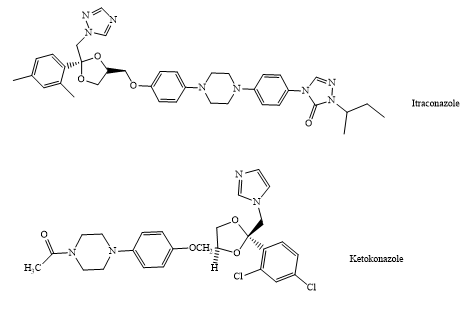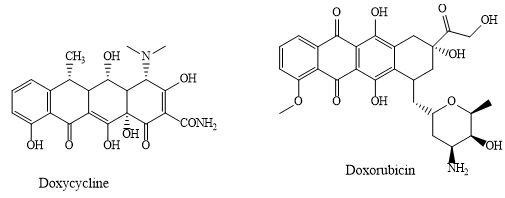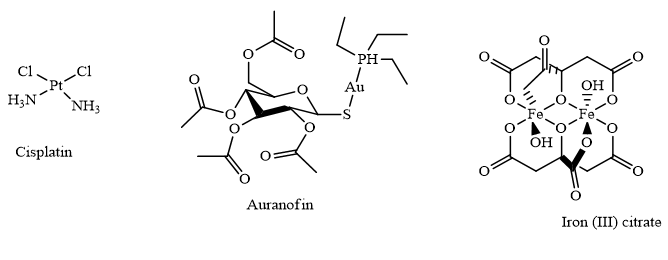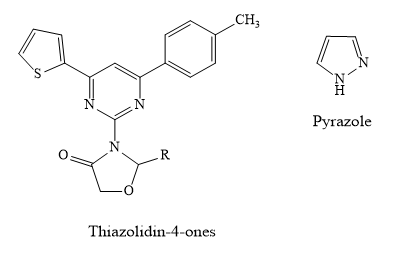Introduction
Cancer is a condition where cells grow uncontrollably, forming tumors that develop abnormally and can spread to other organs or vital systems, impairing their ability to function.1 Several determinant agents, including genetic mutations, pollution, food contaminants, viruses, chemicals, and ionizing radiation, interact to cause cancer, which is why it is regarded as a multifactorial disease.2 Multiple evolutionarily conserved cell cycle control mechanisms tightly regulate cell division to guarantee the generation of two genetically identical cells.3 One of the deadliest illnesses in recent memory, cancer claims many lives each year. The proper management of this disease has been impacted by the variations in the disease across the globe, the impact of the medical facilities that are available, and other socioeconomic factors.4 According to the 2023 global cancer statistics, there will be 20 million additional cases of cancer and 10 million deaths from cancer. Over the following two decades, there will be a roughly 60% increase in the cancer burden, placing additional strain on communities, individuals, and health systems.
According to research done in Ethiopia between 2000 and 2016, cancer was responsible for an estimated 50,913.5 (95%) deaths among people of all ages and both genders (the majority of the patients were females), with a crude death rate of 49.7 per 100,000 and an age-standardized death rate of 93.5 per 100,000. The number of cancer cases has increased to previously unheard-of levels as a result of longer life expectancies. As a result, the pharmaceutical sector has invested a sizable amount of money in this therapeutic field. Despite these efforts, the field of cancer drug research continues to be remarkably difficult, and therapeutic advancements have not yet produced the anticipated clinical outcomes. 5 However, since the first half of the 20th century, drug manufacturers have continued to produce medicines despite their high cost-benefit ratio by taking into account the improved understanding of the disease's physiopathology. 6, 7 Drug companies have created a variety of anticancer drug classes, such as cytotoxic drugs (alkylating agents, antimetabolites, antibiotics, plant extracts, and other cytotoxic drugs), hormones and hormone antagonists, and immunomodulators. 8, 9
However, these chemotherapies have issues with lack of specificity, cytotoxicity, induction of multi-drug resistance, and stem-like cell growth. 10 The identification of new molecular targets has raised hopes for creating better treatments. The main obstacles in cancer drug discovery, improving drug selectivity and lowering side effects, have been addressed by monoclonal antibodies and antibody-small molecule conjugates. 5, 10 Manufacturers and researchers have published a ton of literature on drug targets and new drug development strategies by taking into account the difficulties of anticancer drugs, their toxicity profiles, non-selectivity characteristics, and related side effects. This review therefore aims to compile and summarize a collection of publications centered on novel chemical compounds with cytotoxic activity on cancer cells in vitro, or both, in particular novel biomarkers and target proteins with potential therapeutic properties.
Searching strategy
From March 20 to May 12, previous study data on the discovery of anticancer drugs was gathered from journals using PubMed Central, Google Scholar, and Science Direct. To make it simple for referencing, literature was accurately retrieved, sorted out based on the topic's proximity and the publication date, and then directly cited from the publications.
Materials and Methods
In this review, the reviewer uses websites such as Google Scholar, PubMed Central, and Science Direct as searching tools via a personal computer and other accessories.
Searching results
After searching and filtering recently published literature via the above strategies, I found that many of the articles related to recent advances in anticancer drug discovery. These findings are grouped into three major categories: anticancer drug targets and biomarkers; in vitro and in vivo trials on newly cytotoxic drug advances; and plant-derived advances. Additionally, advances in drug repurposing are included. Furthermore, studies on drug repurposing are added, including those involving approved, discontinued, and shelved medications with anticancer activity. Additionally, studies on electrochemotherapy, gene therapy, phytomedicine, and immunotherapy are included.
General Overview of Anticancer Drug Discovery
Due to their intricate, pricey, time-consuming, and difficult tasks, researchers and drug manufacturers have faced significant challenges in the design and discovery of anticancer drugs. 11 Aside from the complexity, first-hand treatments are extremely toxic and do not target cancer cells specifically. 12, 13 This is true even though manufacturers are working on developing anticancer drugs. It is therefore of great interest to design and develop novel, selective small-molecule drugs, especially with the aid of in silico tools that have been developed in recent years. 14 But recently, artificial intelligence (AI) has emerged as a strong and promising technology for quicker, less expensive, and more efficient anti-cancer drug designs than the previously employed CADD.11 The search for novel drug molecules and the synthesis of more appealing drug molecules can both be sped up by artificial intelligence. Target identification is the first step in the anti-cancer drug discovery process, and after that comes structure-based, ligand-based, and fragment-based screening of successful compounds, de novo anti-cancer drug design for large compounds, anti-cancer drug repurposing, and precise anti-cancer drug reaction prediction. 15, 16
Anticancer medications advance as they are discovered from natural products or synthetically, taking into account the toxicity and efficacy of medications and using this artificial intelligence-based advanced technology or previous CADD as a tool for drug design and discovery. As of late, drug repurposing based on promising targets has also become popular. 17, 18, 19 However, there are drawbacks to cancer immunotherapy, such as resistance, the ability of cancer cells to evade the immune response, and issues with delivery methods. 20 Nanoparticles using nanocarriers as vehicles have some issues that could solve these issues, according to recent advancements. 21 Because of their special qualities, such as biocompatibility, decreased toxicity, increased permeability, improved stability, precision targeting, and retention effect, 22 nanoparticles can be used to treat cancer.
Recent Advances in Anticancer Drug Targets and Biomarkers
Targeted therapy holds the key to raising overall survival rates while lowering the unfavorable side effects of cancer treatment. Compared to patients who did not receive matched targeted therapies, patients who did both overall survival and progression-free survival significantly improved. 23 For the purpose of treating cancer, numerous drug targets have been found. Due to efficacy or toxicity issues, the majority of molecularly targeted agents were ineffective. Researchers are being challenged to concentrate on the drug targets that can aid in the complete eradication of the disease by recent work in the field of molecular biology and a better understanding of the molecular pathology of cancer. 24
Kinases as targets
A group of anti-cancer medications known as kinase inhibitors directly interact with the active site of the target enzyme to prevent kinase activity. According to estimates, the human genome contains about 2000 kinases that are either serine/threonine- or tyrosine-specific and connected to one another. 24 Clinical oncology was first introduced to imatinib, then to bosutinib, sorafenib, and sunitinib. Despite having the same mode of action—competitive ATP inhibition at the tyrosine kinase catalytic binding site—they are distinct from one another in terms of the range of targeted kinases, their pharmacokinetics, and the negative effects that are substance-specific. 25
Tubulin/ microtubule as target
A major component of the eukaryotic cytoskeleton, microtubules are formed by the polymerization of the globular protein tubulin, which has a molecular weight of 52 KD. Through each stage of the cell cycle, microtubules continuously lengthen and shorten. Compared to normal cells, cancer cells rapidly divide and expand. The development of microtubule-targeting agents for the treatment of cancer is being investigated because they are essential for cell division and growth. As a result, the development of anti-cancer medications now includes tubulin as one of their key targets. To find and develop safer and more effective drug candidates, a number of tubulin-targeting agents have been synthesized, and structure-activity relationship studies have been carried out. 24, 26
Vascular targeting agents
Vascular targeting agents (VTAs) are primarily cancer therapies that are created specifically to target the tumor's vasculature and, as a result, prevent the growth and development of tumors. Given the availability of blood-borne medications, it becomes a successful strategy in the treatment of cancer. A steady flow of oxygen and nutrients is necessary because tumor cells divide rapidly. Therefore, the growth of blood vessel networks is necessary for the development, progression, and metastasis of tumors. Vascular disrupting agents (VDAs) can stop blood flow to tumors.27, 28
Angiogenesis inhibitors
A brand-new class of medicines called angiogenesis inhibitors is intended to prevent tumor vascularization. VEGF-A is overexpressed in tumor growth, invasion, and metastases. Targeting VEGF-A at the moment are VEGF-A and VEGFR2 inhibitors 28. Non-small-cell lung cancer (NSCLC) is treated with angiogenesis inhibitors, such as bevacizumab and ramucirumab. These medicines aim to block VEGFs.29
Monoclonal antibodies
To stop tumor vascularization, a new class of drugs called angiogenesis inhibitors is being developed. Tumor growth, invasion, and metastases all exhibit overexpressed VEGF-A. VEGF-A and VEGFR2 inhibitors currently target VEGF-A. 28 Angiogenesis inhibitors (AIs), like bevacizumab and ramucirumab, are used to treat non-small-cell lung cancer (NSCLC). These drugs try to stop VEGFs. 29
Recent Advances in Drug Repurposing for the Discovery of New Anticancer Drugs
Drug repositioning, another name for drug repurposing, is a tactic that looks at additional diseases besides the one for which a drug has already received approval.30, 31, 32
Antiplatelet Agents
Although aspirin's clinical use as an anticancer medication has been expanded and regular use of the medication is associated with a lower risk of breast cancer, aspirin is primarily used as an antiplatelet medication for cardiovascular diseases. Henry et al. suggests that aspirin and PI3K inhibitors may be used in combination therapy to treat breast cancer. 33
Anti-inflammatory drugs
According to recent in vivo data, diclofenac successfully slows the growth of pancreatic tumors in mice. Diclofenac therapy resulted in a rise in apoptosis and a fall in angiogenesis, according to analysis of the tumor tissue removed during surgery. Additionally, melanoma cells were used to test the effectiveness of a diclofenac and sorafenib (a kinase inhibitor) combination, and the results were positive for all cancer cells.34 Furthermore, in in vivo rat models, the selective COX-2 inhibitor celecoxib inhibited the growth of breast cancer cells and decreased tumor development. It was discovered that the level of COX-2 expression and the invasiveness of the tumor cells were required for growth inhibition.35 Mesalazine has also been mentioned as having anti-cancer potential in a variety of cancers, including colorectal cancer, gastric cancer, breast cancer, and colon cancer. 36
Antidiabetic agents
The first line of treatment for type 2 diabetes mellitus is metformin, an oral medication. Numerous cancer types, including pancreatic, endometrial, breast, lung, and prostrate, have shown it to have anti-neoplastic activity. 37 Through numerous preclinical and clinical studies, thiazolidinediones (TZDs) have been identified as a potent lead in the treatment of breast and prostate cancer. Troglitazone, rosiglitazone, and pioglitazone are the three key components of this medication. 38
Anthelmintic agents
Treatment with repurposing pleiotropic benzimidazole anthelminthics like flubendazole and albendazole has recently opened a new window due to their simple accessibility, affordable price as a generic drug, and long history of safe use in the human population. These pleiotropic benzimidazoles are potent microtubule disruptors, anti-angiogenic, anti-metastatic, immune checkpoint, hypoxia-inducible factor, epithelial-mesenchymal transition, cancer stemness, and multidrug resistance protein 1 inhibitors, as well as inducers of apoptosis and M1 polarization, according to extensive preclinical research and a small number of clinical trials.30
Antipsychotic agents
Several studies have shown that individuals taking antipsychotic medications for psychiatric conditions like schizophrenia have decreased incidences of colon, rectal, and prostate cancer, 39 indicating that antipsychotic medications do have anti-cancer potential. In colon, glioma, and gastric cancer, the drug aripiprazole, which is prescribed to patients with schizophrenia, slows down cell division and tumor growth. 40, 41 Sertindole is a promising candidate drug for the treatment of gastric and breast cancers. 42 Valproic acid, a common neuroleptic drug used to treat epilepsy, bipolar disorder, and migraines, has been found to use epigenetic mechanisms, such as the inhibition of histone deacetylases, which further reduce tumor cell proliferation, cause cell differentiation, and inhibit angiogenesis, ultimately leading to cell death. 43 It has been reported that phenothiazines inhibit DNA polymerase in mitochondria, induce differentiation of tumor stem cells, and decrease tumor cell proliferation. Olanzapine, a medication used to treat bipolar disorder, schizophrenia, and Tourette syndrome, destroys tumor cells by upsetting the homeostasis of cholesterol. 44 There is evidence that selective serotonin reuptake inhibitors (SSRI) reduce proliferation, leading to the death of tumor cells. 45
Antiviral drugs
Zidovudine, a reverse transcriptase inhibitor, was the first drug approved to treat HIV infection. It also exhibits anti-cancer properties against a number of cancer types, including pancreatic, leukemia, and Kaposi sarcoma. Similar to this, Brivudine, a medication used to treat herpes simplex virus, demonstrated anti-cancer properties by reducing chemoresistance.[88] In ovarian, pancreatic, and breast cancer cells, ritonavir has been shown to reduce cancer cell growth and division and to speed up apoptosis.46, 47
Antifungal agents
The antifungal drug itraconazole is known to inhibit the AKT/mTOR signaling pathway in human umbilical vein endothelial cells (HUVECs), endometrial carcinoma (EC), melanoma cells, and glioblastoma. It regulates the signal transduction pathways of Hedgehog, reverses chemoresistance brought on by P-glycoprotein, and prevents angiogenesis and lymphangiogenesis in cancer cells.48 Additionally, ketoconazole demonstrated anti-cancer activity against hepatocellular carcinoma, prostate, melanoma, and breast cancer. It effectively blocks the biogenesis of exosomes in prostate cancer cells while generally being more tolerable and having fewer negative side effects.49
Antibacterial agents
Doxorubicin has been found to be effective in treating breast cancer. By intercalating breaks into the DNA, it prevented DNA replication. When combined with a COX-2 inhibitor, doxycycline prevents the growth of colon cancer cells by causing G0/G1 arrest and blocking matrix metalloproteinase. Doxycycline inhibits both the mitochondrial biogenesis process and the stem cell phenotype of cancer cells in the context of breast cancer.50, 51
Heterometallic compounds
Though platinum-based drugs are frequently used in medical treatments, their effectiveness is constrained by their toxicity due to interactions between platinum and biomolecules that have sulfur as a donor atom, such as thiols and thioethers.52 As a result, newly developed mechanisms are creating novel heterometallic complexes with metal centers that have different coordination geometry, kinetic properties, affinity, and reactivity towards biologically relevant nucleophiles in order to overcome the toxicity of platinum-based drugs.53 Drugs based on heterometallic materials have a promising future for efficacy above those based on platinum, in addition to minimizing toxicity.54 Platinum, gold, and titanium are more prevalent among the many heterometallic-based promising compounds for cancer treatment.55, 56
With IC50 values ranging from 7 to 19 M against a panel of human cancer cell lines, the synthesis and characterization of a number of novel heterocyclic compounds, including thiazolidin-4-ones, 1,3,4-thiadiazoles, and thiazoles bearing thymol under mild conditions, exhibit significant anticancer activity.57 Due to its presence in many natural substances, pyrazole, a five-membered ring with two adjacent nitrogen atoms in its structure, has been postulated as a potent candidate in the pharmacological context with an interesting therapeutic target covering a broad spectrum of biological activities. 58 In vitro tests recently revealed progress in the use of bis-heterocyclic compounds as efficient anticancer treatments, which goes beyond the concern regarding the anticancer treatment potential of heterocyclic compounds. 59
Conclusion
The global impact of cancer is extremely negative. Beginning with the first nitrogen mustards, researchers and pharmaceutical companies tried their best to find cures. The lack of selectivity, effectiveness, side effects, and metastatic nature of the diseases make effective treatment challenging, despite the availability of a wide range of treatment options as alternatives. Recent advances in the field of molecular biology and a deeper comprehension of the molecular pathology of cancer have pushed researchers to concentrate on the drug targets that can aid in the total eradication of the disease.
The discovery of anticancer drugs is outlined in this review's recent highlights. Researchers are now better able to identify specific treatments with lower toxicity and better tolerability thanks to recent advances in drug target and discovery. Numerous drug targets have been found for the treatment of cancer based on a variety of articles written by academics, in order to improve their efficacy and decrease their toxicity. The most effective cancer treatment focuses are kinase, microtubulin, vascular targeting, angiogenesis, and monoclonal antibodies. Researchers look into alternative uses of a drug that has already been approved for one condition for other diseases in addition to its original indication in order to significantly reduce the cost, labor, and research time. Antiplatelet, antidiabetic, anti-inflammatory, antimicrobial, and antipsychotic agents are among the repurposed medications that are mentioned.
A popular method for finding new classes of anticancer agents as well as their inventive modes of action is through the discovery of phytochemicals. Quercetin, ginseng, artemisinin, and curcumin all have the potential to fight cancer. On the other hand, natural products are recognized as superior and more potent chemotherapeutic agents. A significant amount of anticancer activity is exhibited by newly developed mechanisms that are designing novel heterometallic complexes with metal centers and heterocyclic and bis-heterocyclic substances like thiazolidin-4-ones, 1,3,4-thiadiazoles, and thiazoles to overcome the toxicity of chemotherapies.

